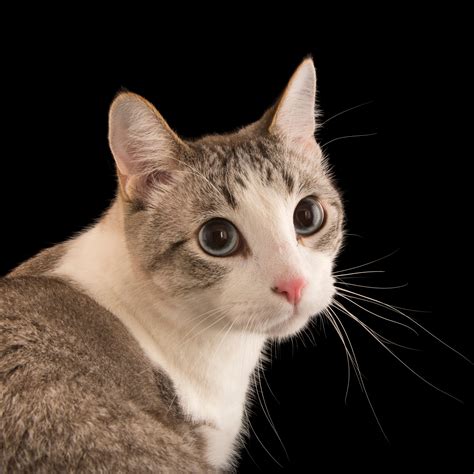Determining the Optimal Daily Dry Food Intake for Your Cat
Understanding a Cat's Nutritional Needs
Cats, obligate carnivores, possess unique dietary requirements essential for their health and well-being. Their bodies are optimally designed to derive nourishment from a meat-based diet, emphasizing the importance of providing them with food rich in protein and taurine. While dry food offers convenience and affordability, it's crucial to ensure that it meets your cat's specific nutritional needs.
Age and Weight Considerations
The amount of dry food a cat should eat daily varies significantly depending on its age, weight, and activity level.
-
Kittens (up to 1 year): Rapid growth and development require higher calorie intake. Aim for 20-30% of their body weight daily.
-
Adult Cats (1-10 years): Moderate activity levels necessitate 2-2.5% of their body weight daily.
-
Senior Cats (10+ years): Reduced metabolism and activity levels warrant 1.5-2% of their body weight daily.
Guidelines for Determining Dry Food Intake
The Pet Food Institute provides general feeding guidelines based on a cat's weight:
| Cat's Weight (lbs) |
Daily Dry Food Amount (cups) |
| 5 |
1/4 - 1/2 |
| 8 |
1/2 - 3/4 |
| 11 |
3/4 - 1 |
| 14 |
1 - 1 1/4 |
| 17 |
1 1/4 - 1 1/2 |
Tailoring to Individual Needs
Consider the following factors when adjusting the recommended amounts:


-
Activity Level: Active cats may require more food than those with sedentary lifestyles.
-
Health Conditions: Certain health conditions, such as hyperthyroidism or diabetes, can alter a cat's appetite.
-
Appetite: Monitor your cat's food intake and adjust accordingly if they consistently leave food or overeat.
-
Body Condition: Assess your cat's body condition score regularly and adjust feeding if they appear underweight or overweight.
The Benefits of Optimal Dry Food Intake
Providing your cat with the correct amount of dry food offers numerous health benefits:
-
Maintaining a Healthy Weight: Proper calorie intake helps prevent obesity, a leading cause of health issues in cats.
-
Supporting Digestion: Dry food contains fiber, which promotes healthy digestion and prevents gastrointestinal upset.
-
Reducing Dental Disease: Dry food's crunchy texture helps remove plaque and tartar from teeth, promoting oral hygiene.
-
Energy Levels: Providing adequate calories ensures your cat has the energy it needs for daily activities.
Common Mistakes to Avoid
-
Free-Feeding: Leaving a bowl of food out all day allows your cat to overeat, leading to weight gain and health problems.
-
Using Human Food: Table scraps or human snacks are often high in fat, calories, and unhealthy ingredients, posing a risk to your cat's health.
-
Ignoring Calorie Requirements: Overfeeding or underfeeding your cat based on its size or age can result in malnutrition or obesity.
-
Switching Foods Abruptly: Gradual food transitions over 7-10 days minimize the risk of digestive upset.
The Importance of Quality Dry Food
The quality of dry food you choose significantly impacts your cat's health and well-being. Look for foods that:
-
Are meat-based: Provide a high-quality protein source.
-
Contain essential nutrients: Include essential vitamins, minerals, and taurine.
-
Are appropriate for your cat's life stage: Meet the specific nutritional needs of kittens, adults, or seniors.
Comparing Dry and Wet Food
Both dry and wet food have their advantages and disadvantages.
Dry Food:

-
Pros: More cost-effective, longer shelf life, promotes dental health, lower in calories
-
Cons: May not be as palatable, can contribute to dehydration
Wet Food:
-
Pros: Higher in moisture, more palatable, easier to digest
-
Cons: More expensive, shorter shelf life, requires refrigeration
Stories and Lessons Learned
Story 1:
Luna, an overweight cat, was struggling with health issues due to excessive food intake. By reducing her dry food portion size based on her weight and activity level, she gradually shed weight and improved her health.
Lesson: Monitoring your cat's food intake and adjusting it appropriately can prevent weight problems and promote overall well-being.
Story 2:
Oliver, a senior cat, was experiencing digestive issues due to a sudden diet change. By introducing the new food gradually and consulting with a veterinarian, Oliver's digestive problems subsided.
Lesson: Making gradual dietary changes and consulting with a veterinarian is crucial to ensure your cat's digestive health.

Story 3:
Toby, a young kitten, was not gaining weight despite eating a large amount of dry food. Examination revealed that the food he was eating was low in calories and protein. By switching to a higher-quality, meat-based dry food, Toby's growth and development improved significantly.
Lesson: Choosing a high-quality dry food that meets your cat's specific nutritional needs is essential for their growth and development.
Conclusion
Determining the optimal amount of dry food for your cat requires consideration of its age, weight, activity level, and individual needs. By following the guidelines provided, monitoring your cat's food intake, and choosing high-quality dry food, you can ensure your feline companion receives the proper nutrition it needs for a healthy and happy life.
